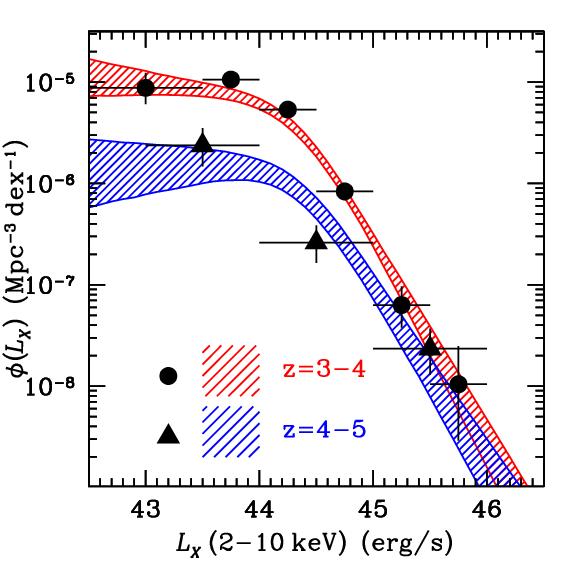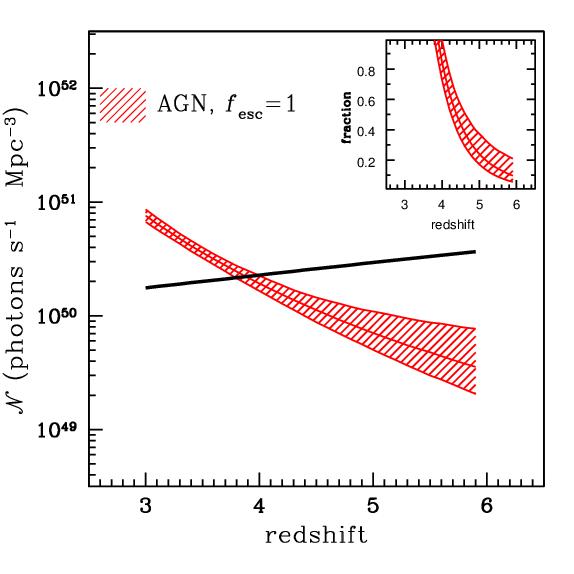

Left: Observational constraints on the X-ray luminosity function of AGN in two redshift intervals, z=3-4 and z=4-5. The coloured shaded regions are parametric model fits to the data. The width of the shaded regions measures the 1σ uncertainties. The black symbols (circles or triangles) are non-parametric (binned) estimates of the AGN space density. The plot shows that X-ray selected AGN experience strong evolution from redshift z=3.5 to z=4.5. For example, the space density of AGN with luminosities LX<1045erg/s drop by about one order of magnitude between the two redshifts. At brighter luminosities the evolution of AGN is milder. Right: Observational constraints on the contribution of AGN to the UV photon-rate density needed to keep the Universe ionised at any given redshift. The shaded regions are hydrogen ionisisng photo-rates based on the parametric X-ray luminosity functions plotted on the left panel. For simplicity we assume a photon escaping fraction of unity, i.e. ignoring obscuration effects close to the supermassive black hole. The thick black line in the plot shows the photon rate density required to keep the Universe ionised at any redshift. The ratio between the shaded region and the black line is presented in the inset plot. It shows that AGN alone cannot reionise the Universe at redshifts z>4. More details in Georgakakis et al. 2015.